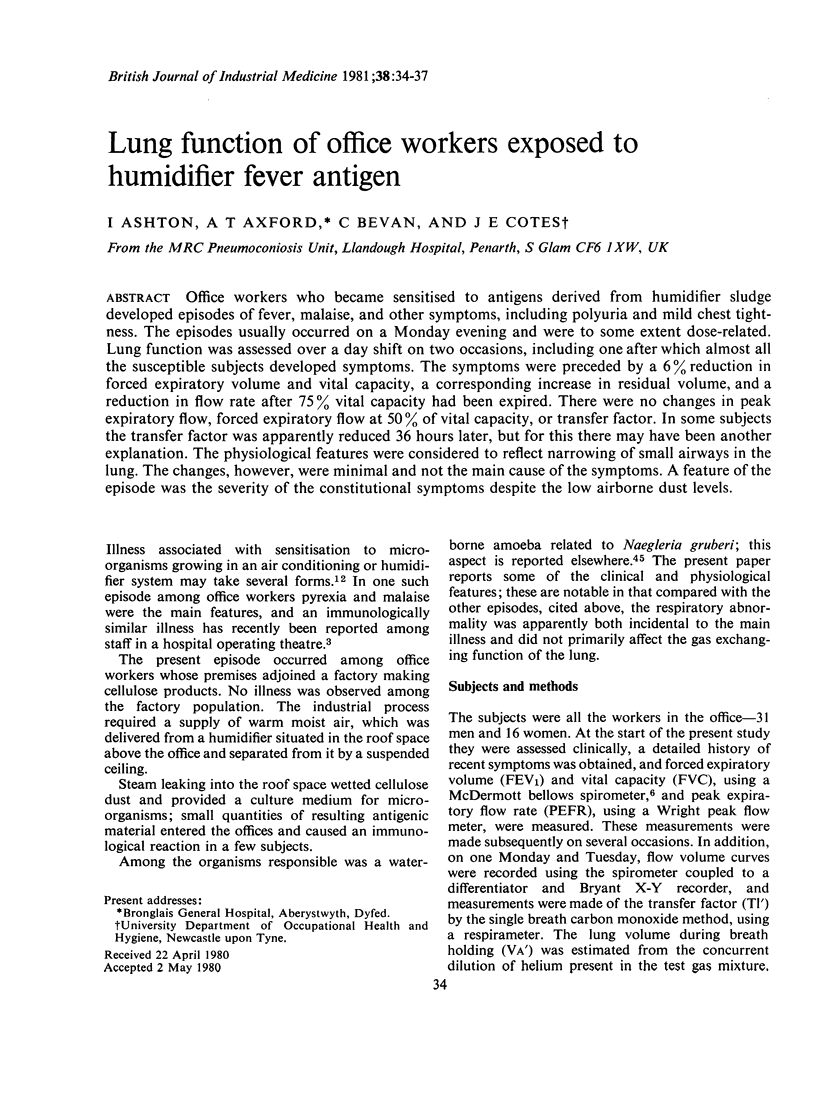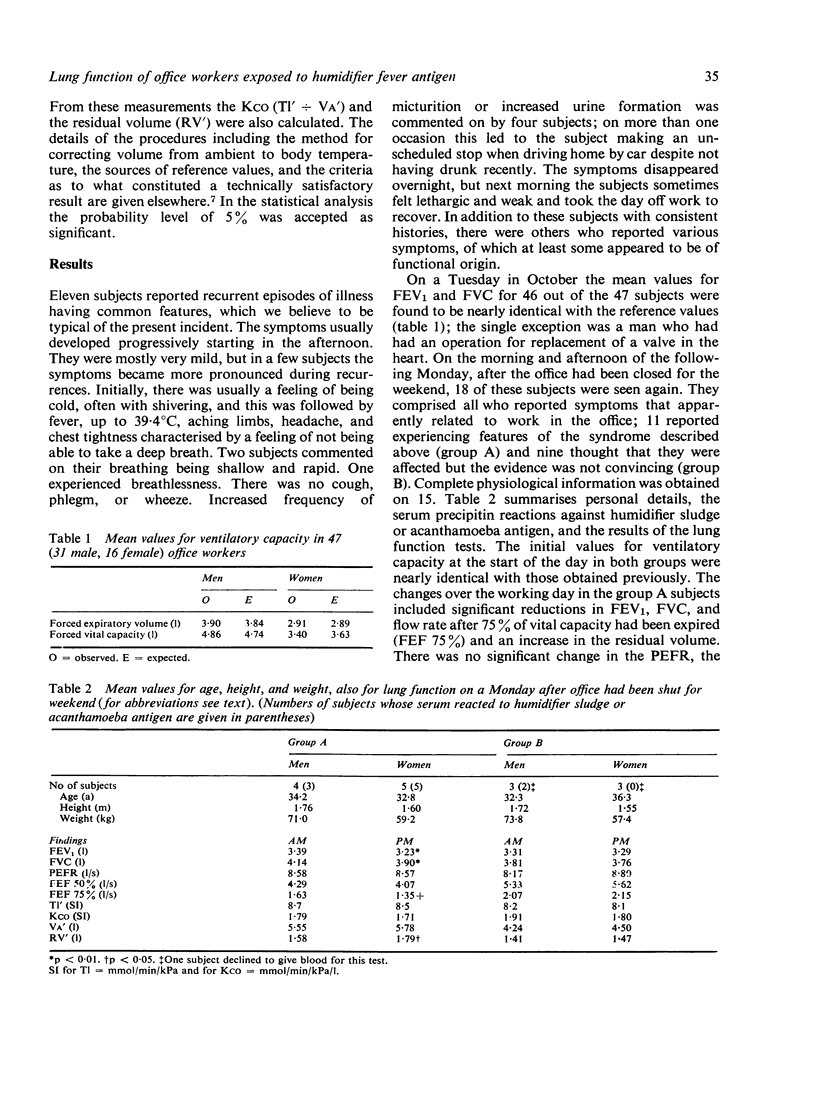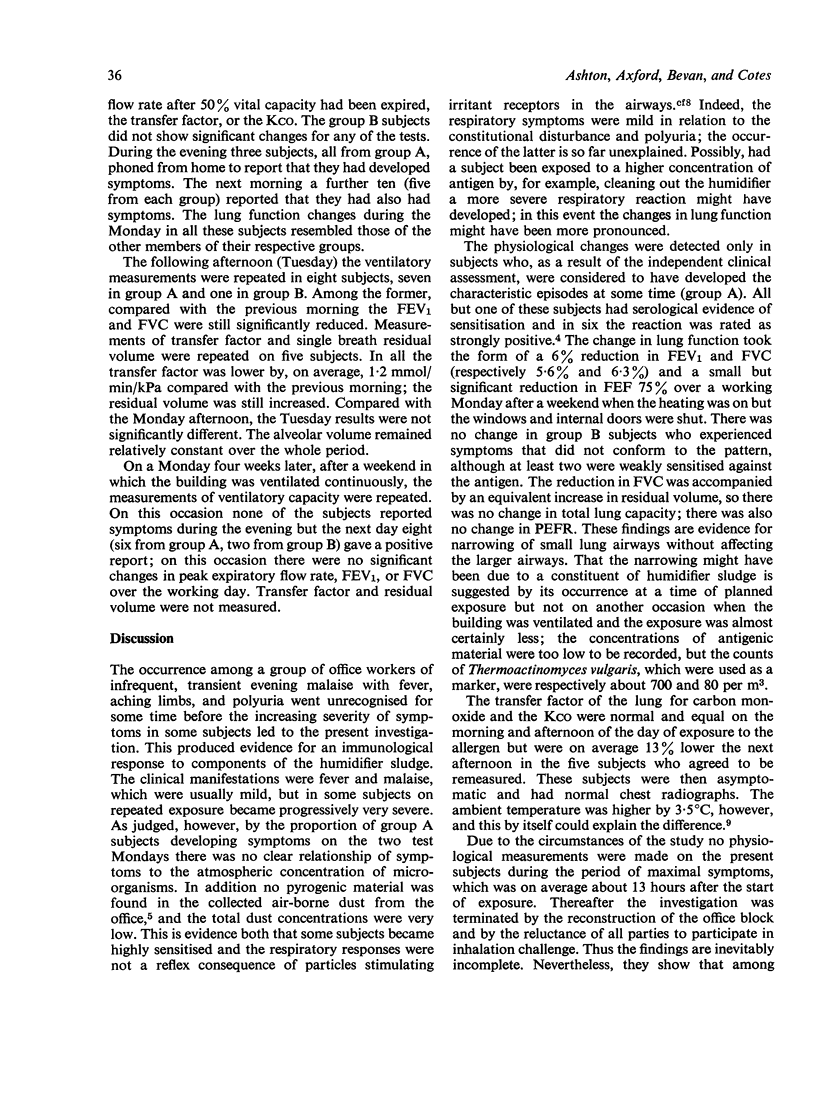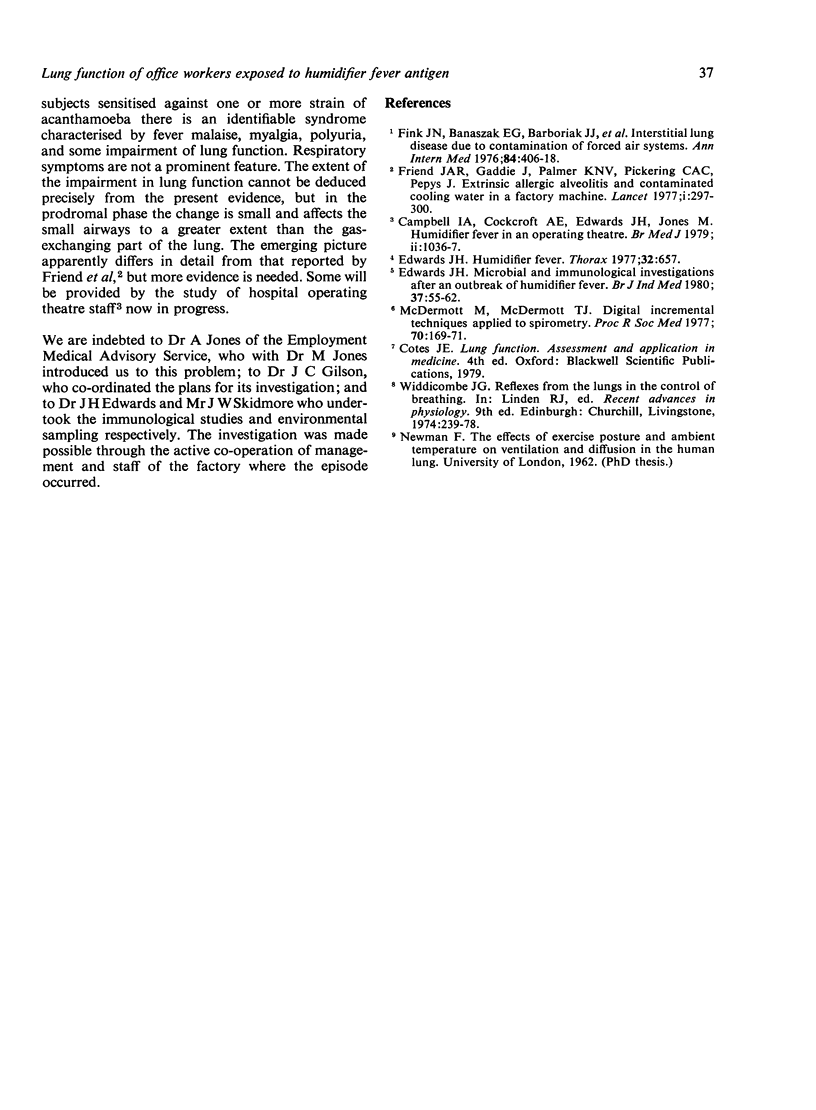Abstract
Office workers who became sensitised to antigens derived from humidifier sludge developed episodes of fever, malaise, and other symptoms, including polyuria and mild chest tightness. The episodes usually occurred on a Monday evening and were to some extent dose-related. Lung function was assessed over a day shift on two occasions, including one after which almost all the susceptible subjects developed symptoms. The symptoms were preceded by a 6% reduction in forced expiratory volume and vital capacity, a corresponding increase in residual volume, and a reduction in flow rate after 75% vital capacity had been expired. There were no changes in peak expiratory flow, forced expiratory flow at 50% of vital capacity, or transfer factor. In some subjects the transfer factor was apparently reduced 36 hours later, but for this there may have been another explanation. The physiological features were considered to reflect narrowing of small airways in the lung. The changes, however, were minimal and not the main cause of the symptoms. A feature of the episode was the severity of the constitutional symptoms despite the low airborne dust levels.
Full text
PDF



Selected References
These references are in PubMed. This may not be the complete list of references from this article.
- Campbell I. A., Cockcroft A. E., Edwards J. H., Jones M. Humidifier fever in an operating theatre. Br Med J. 1979 Oct 27;2(6197):1036–1037. doi: 10.1136/bmj.2.6197.1036-a. [DOI] [PMC free article] [PubMed] [Google Scholar]
- Edwards J. H. Microbial and immunological investigations and remedial action after an outbreak of humidifier fever. Br J Ind Med. 1980 Feb;37(1):55–62. doi: 10.1136/oem.37.1.55. [DOI] [PMC free article] [PubMed] [Google Scholar]
- Fink J. N., Banaszak E. F., Barboriak J. J., Hensley G. T., Kurup V. P., Scanlon G. T., Schlueter D. P., Sosman A. J., Thiede W. H., Unger G. F. Interstital lung disease due to contamination of forced air systems. Ann Intern Med. 1976 Apr;84(4):406–413. doi: 10.7326/0003-4819-84-4-406. [DOI] [PubMed] [Google Scholar]
- Friend J. A., Gaddie J., Palmer K. N., Pickering C. A., Pepys J. Extrinsic allergic alveolitis and contaminated cooling-water in a factory machine. Lancet. 1977 Feb 5;1(8006):297–300. doi: 10.1016/s0140-6736(77)91839-6. [DOI] [PubMed] [Google Scholar]
- McDermott M., McDermott T. J. Digital incremental techniques applied to spirometry. Proc R Soc Med. 1977 Mar;70(3):169–171. doi: 10.1177/003591577707000310. [DOI] [PMC free article] [PubMed] [Google Scholar]


